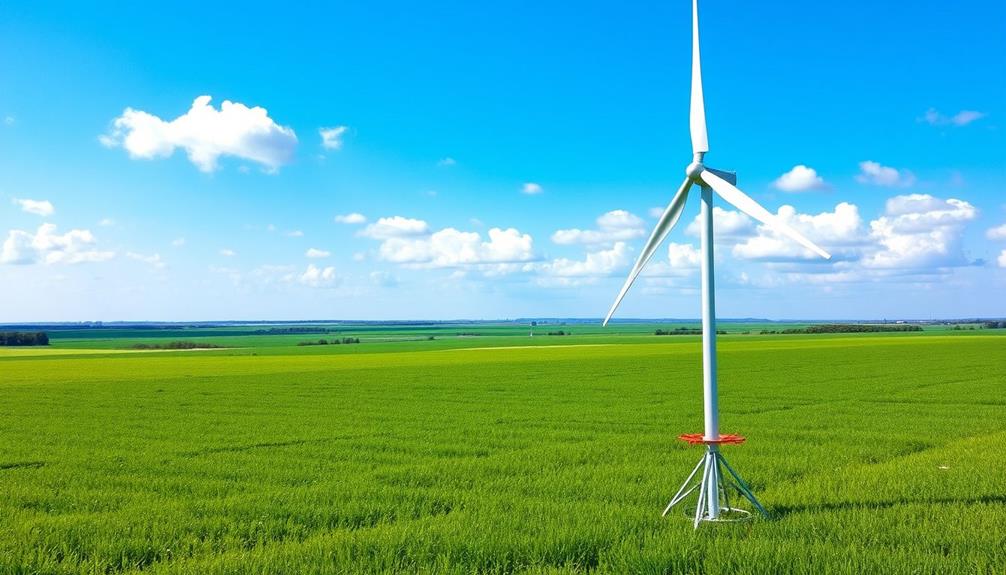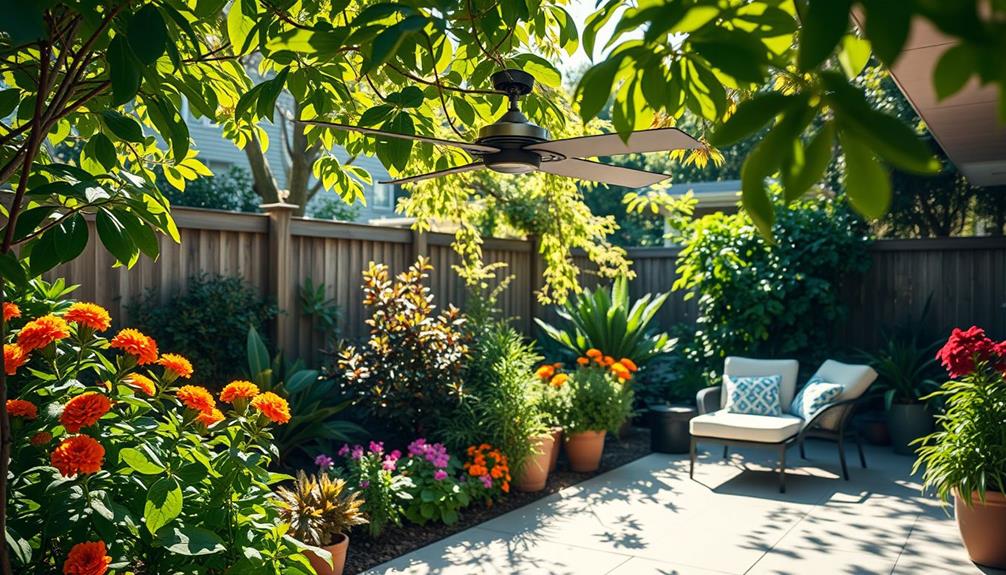You can build your own wind generator kit to harness renewable energy and greatly cut your electricity costs. With a DIY project costing around $140, you'll save big compared to commercial options that can reach $1,000. Essential components like a generator, aerodynamic blades, and a sturdy mounting system make it possible to generate power from the wind. Plus, you'll enhance your home's value and reduce your carbon footprint. By assembling and optimizing your setup, you can enjoy long-term savings and sustainability. Stick around to discover the best practices for building and maintaining your wind generator!
Key Takeaways
- Build your own wind generator kit for approximately $140, significantly less than commercial options costing $750-$1000.
- Utilize essential components like a DC motor, PVC blades, a charge controller, and batteries for effective energy generation.
- Follow a step-by-step assembly process to construct, test, and optimize your wind turbine for maximum efficiency.
- Enjoy long-term savings on energy bills, with potential reductions of up to 80% for off-grid living.
- Contribute to environmental sustainability by reducing reliance on fossil fuels and lowering your carbon footprint.
Project Motivation and Goals
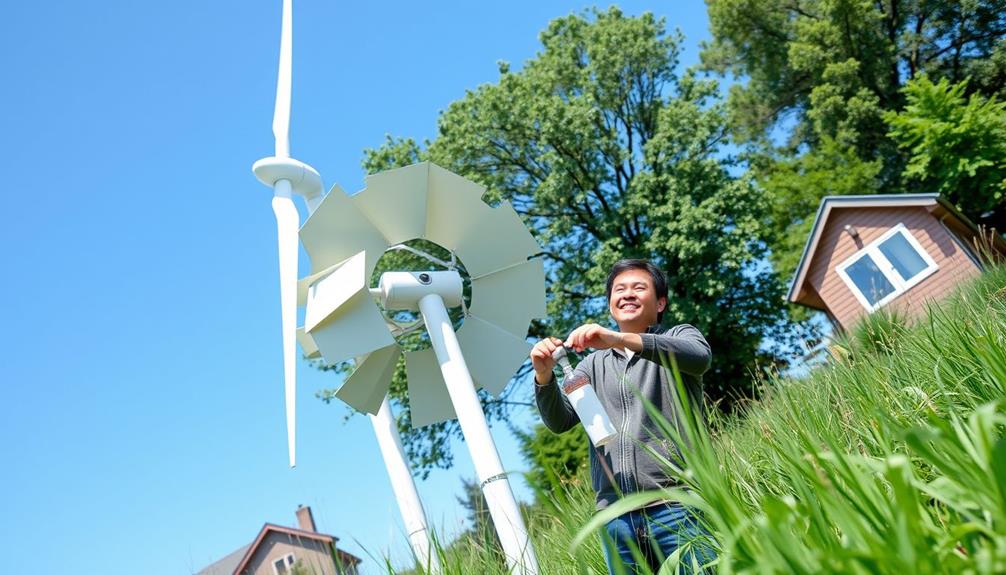
Building a wind generator kit is driven by the need for energy independence, especially in remote areas like Arizona, where electric service is non-existent. By creating your own DIY wind turbine, you can tap into the consistent winds of your Arizona property, greatly reducing energy costs.
Additionally, the use of advanced materials in turbine construction can enhance performance while keeping costs low, ensuring a more efficient energy capture. While commercial turbines can set you back between $750 and $1000, your project might only cost around $140, making it a smart choice for off-grid living.
Your goal is to harness renewable energy through wind energy generation, aligning perfectly with a broader commitment to alternative energy sources. By incorporating wind power alongside solar energy applications and biomass solutions, you can create a more sustainable power generation system.
Not only will this approach fulfill your immediate energy needs, but it also promotes environmental stewardship. By reducing reliance on fossil fuels, you're actively lowering your carbon footprint, contributing to a healthier planet.
In essence, your motivation for building a wind generator kit is about more than just cost savings; it's about empowering yourself with energy independence while supporting sustainable practices in your community.
Essential Components for Construction
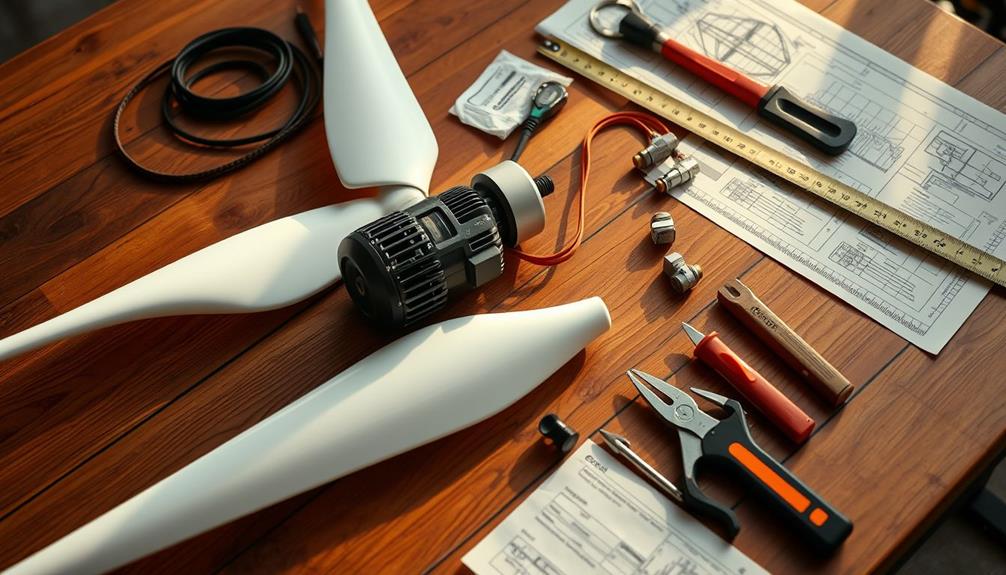
To successfully harness wind energy, you've got to gather several key components for your DIY wind generator kit. The generator, often a permanent magnet DC motor, is fundamental because it converts wind energy into electrical energy. Consider using an Ametek motor, known for its efficiency and ability to generate several hundred watts of power.
As the demand for renewable energy solutions increases, understanding the ethical implications of technology in energy generation can enhance your project's impact, as highlighted by AI Ethicist Jobs.
Next, you'll need blades designed for ideal aerodynamics to capture the wind effectively. You can create these blades from PVC or ABS pipe, with a common design featuring four airfoil-shaped blades.
A sturdy mounting system is essential for stability and height, allowing your wind generator to harness wind effectively.
Don't forget the charge controller, which monitors battery voltage and prevents overcharging, keeping your energy storage safe and efficient, typically set between 11.9V and 14V.
Batteries play an important role in energy storage, ensuring you have power when the wind isn't blowing. Additionally, you'll need wiring for connectivity and safety features like blocking diodes to protect against backflow of electricity.
With these fundamental components, you're well on your way to building an effective DIY wind generator.
Step-by-Step Assembly Process
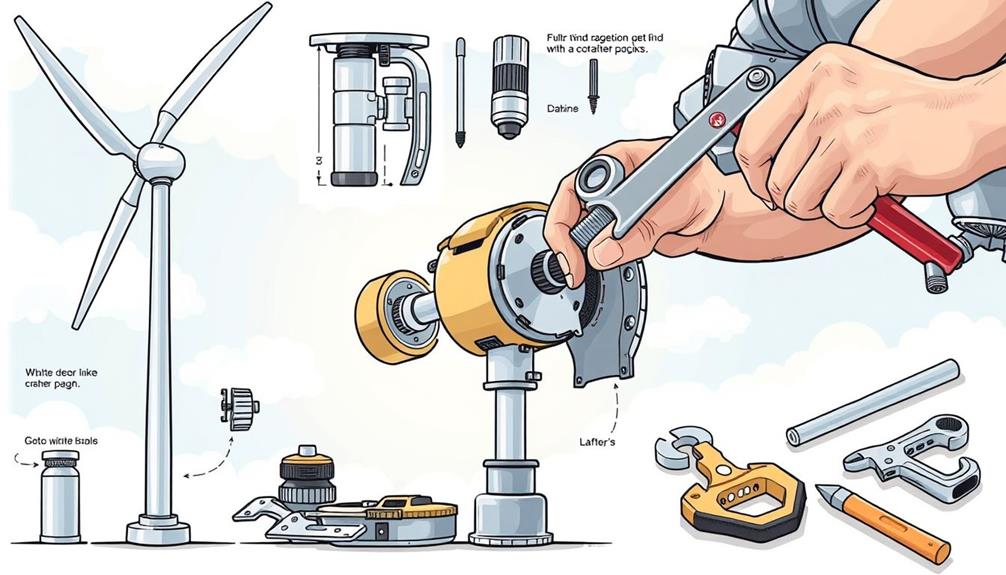
Once you've gathered all the essential components, you can plunge into the assembly process of your wind generator. Start by constructing the blades from PVC or ABS pipe, shaping them into airfoils to maximize wind capture. Aim for a diameter of around 6 inches and a length of 24 inches for peak performance.
Proper assembly and design are vital to guarantee your generator operates efficiently, much like selecting the best heat pump for your home can greatly improve energy efficiency and comfort ideal comfort in varying weather conditions.
Next, assemble the hub by securely attaching the blades to the generator, using drilling and bolting techniques for a solid connection. This step is essential for efficient power generation.
Now, it's time to focus on the mounting system. Use PVC and metal conduit to build a sturdy turbine mounting and tower base. This structure should allow for easy raising and lowering, making maintenance and seasonal adjustments straightforward.
Once the physical assembly is complete, integrate the electronics. Connect the charge controller to the battery system, verifying you set the voltage parameters correctly—around 11.9V for low and 14V for high operation.
Proper connections here will manage power flow and prevent overcharging, ensuring your wind generator operates smoothly. With everything assembled, you're on your way to harnessing wind energy effectively!
Testing and Optimization Techniques
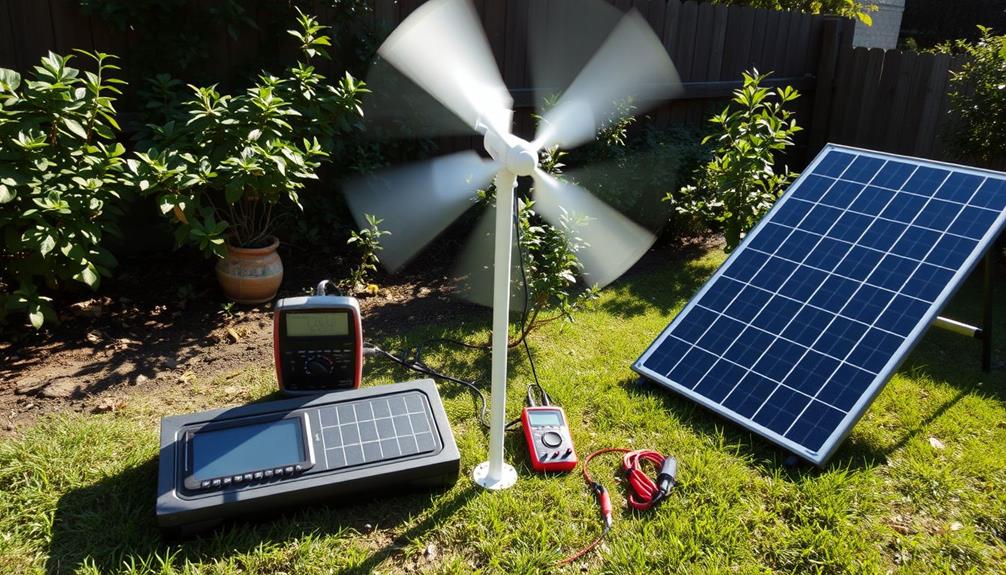
With your wind generator fully assembled, the next step involves testing and fine-tuning its performance. Start by conducting initial tests in varying wind conditions to verify your turbine achieves ideal rotational speed without load.
For testing purposes, you'll want to measure the voltage output using a multimeter. Aim for around 14.5 volts to effectively charge your batteries.
Additionally, think about incorporating primitive weapons for modern survival techniques for enhancing your self-reliance during unforeseen circumstances.
Here are three key techniques to reflect on:
- Use a Charge Controller: Implement a charge controller to manage power flow and prevent battery overcharging. Set your voltage thresholds at 11.9V for low operation and 14V for high operation.
- Monitor Wind Capture: Regularly adjust the turbine's angle and orientation to maximize wind capture while minimizing strain during high winds for safety and efficiency.
- Document Performance Data: Keep track of your performance data and make iterative adjustments to your blade design or tower height. This will enhance power generation based on your local wind patterns.
Cost Breakdown and Savings
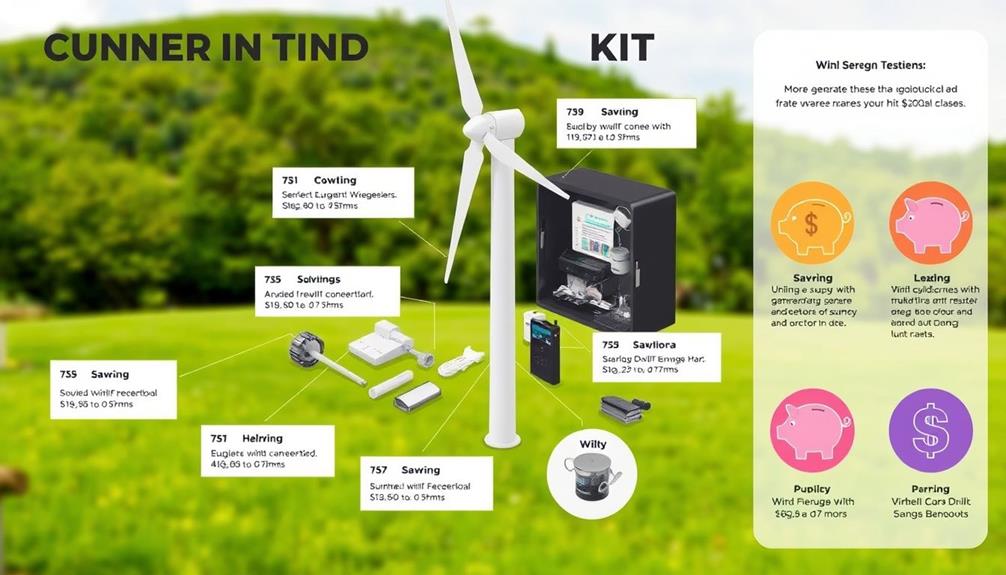
Building a DIY wind generator kit can be a financially savvy choice, costing as little as $140.62 compared to the $750-$1000 typical for commercial turbines. By opting for a DIY wind solution, you not only save on initial expenses but also create a cost-effective renewable energy source.
Understanding the importance of budgeting for investments can help you allocate funds effectively for your project. The primary costs in your project will involve the motor/generator, pipe fittings, and some miscellaneous hardware.
To further reduce your costs, consider using scrap materials or surplus items you already have at home. This approach makes renewable energy accessible to even more people.
As you construct your own wind generator, you'll enjoy substantial savings on your energy bills, allowing you to invest in other areas of your life. The wind generator benefits extend beyond just the financial aspect. By generating your own clean energy, you’ll be reducing your carbon footprint and contributing to a more sustainable environment. Additionally, with the independence of your own energy production, you’ll be less affected by fluctuations in energy prices and potential power outages.
Moreover, the investment in a DIY wind turbine can lead to long-term financial benefits. Lower energy costs mean more money in your pocket over time, and your property value may also increase, as homes with renewable energy sources are often more desirable.
Long-Term Benefits of Wind Energy
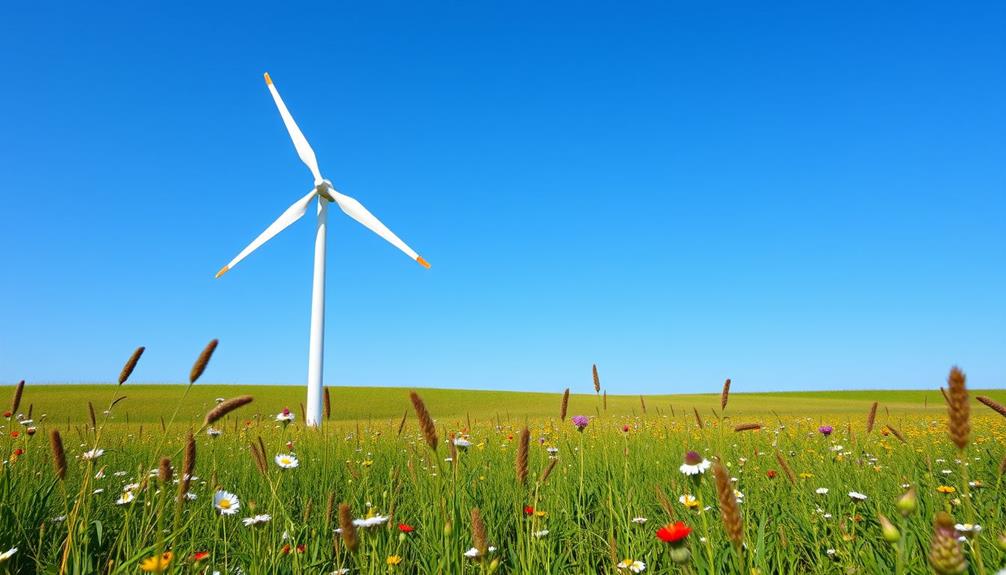
Investing in a DIY wind generator not only saves you money upfront but also sets the stage for impressive long-term benefits. By harnessing wind energy, you can achieve considerable long-term financial savings and energy independence.
Additionally, as more households explore sustainable energy solutions, the demand for thrilling adventures in renewable energy is on the rise. Here are three key advantages:
- Cost Efficiency: Wind energy can cut your electricity bills by up to 80%, especially for off-grid living. The operational costs of wind turbines are lower compared to traditional fossil fuels, making them a smart investment.
- Environmental Impact: As a renewable resource, wind energy helps reduce greenhouse gas emissions, considerably lowering your carbon footprint. This shift contributes to combating climate change and creating a healthier planet for future generations.
- Economic Growth: The increased use of wind energy can stimulate local economies by creating manufacturing jobs and opportunities in installation and maintenance.
With a lifespan of 20 years or more for wind turbines, you can enjoy prolonged energy generation, ensuring a solid return on your investment.
Frequently Asked Questions
How Much Power Can a Homemade Wind Turbine Generate?
A homemade wind turbine can generate between 100 to 1,000 watts, depending on its size, design, and wind speed. Placing it in a prime location guarantees you capture the most energy efficiently.
What Is the Biggest Downside of Generating Electricity Using Wind Turbines?
Generating electricity with wind turbines can feel like chasing the wind; it's unpredictable. The biggest downside is their reliability issues, often leading to mechanical failures and inconsistent power output, leaving you frustrated and underpowered.
How Much Electricity Does a Large Wind Generator Produce?
A large wind generator typically produces between 1.5 to 3 megawatts of electricity under ideal conditions. That's enough to power 300 to 900 homes, depending on local energy consumption and prevailing wind speeds.
What's the Best Way to Make a Wind Turbine Generate More Power?
You might think it's too complex, but optimizing your turbine's blade design and height can considerably boost power generation. Pair it with a high-voltage generator and a charge controller to enhance efficiency and storage.
Conclusion
By building your own wind generator kit, you're not just saving money; you're investing in a sustainable future. While conventional energy sources drain your wallet and deplete the earth, harnessing wind power allows you to generate clean energy right at home. With a little effort, you can turn the wind into your ally, reducing energy costs while contributing to a healthier planet. Embrace the power of wind, and watch both your savings and environmental impact soar!
